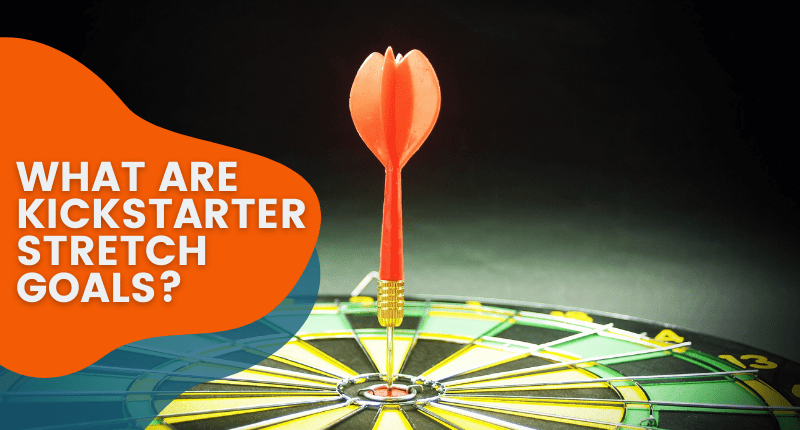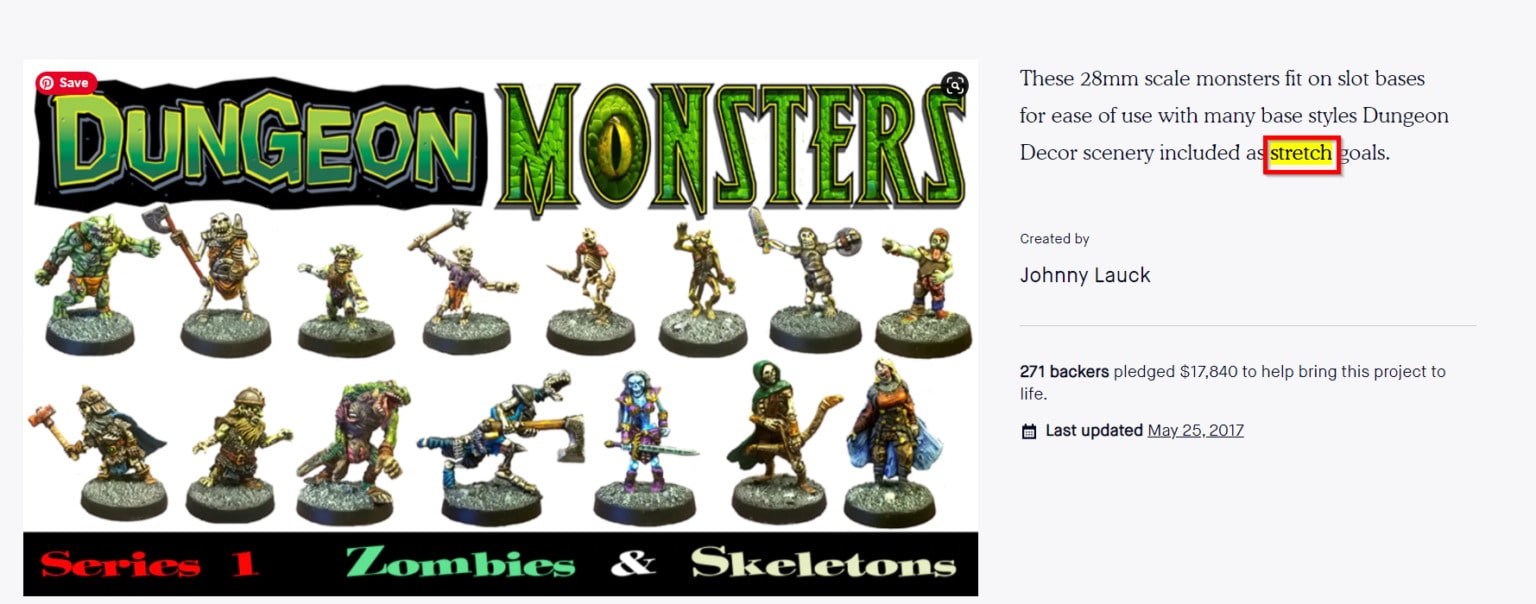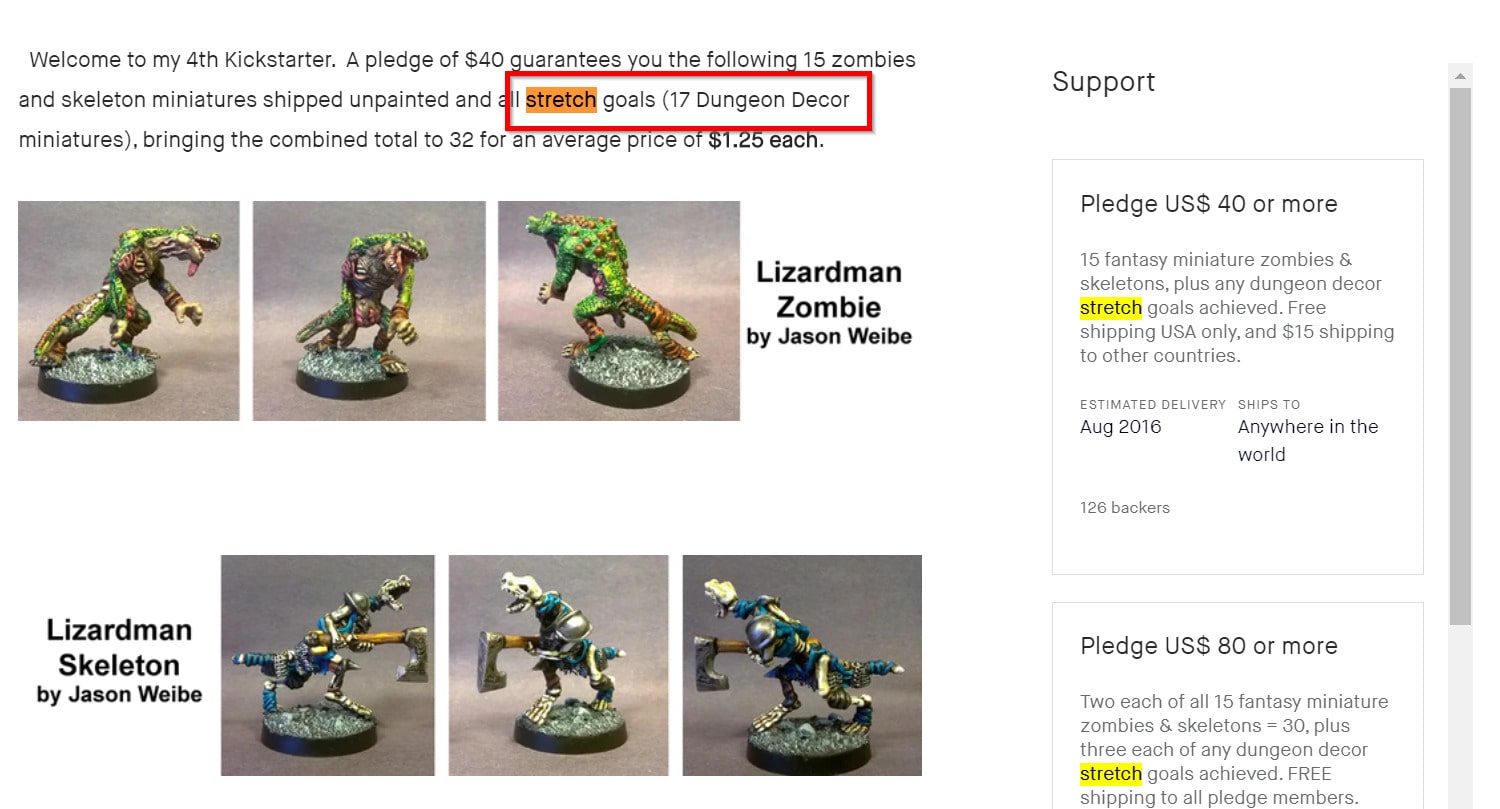
13 Nov What are Kickstarter Stretch Goals? 5 Key Factors to Consider Before Stretching Your Funding Goal.
What is a stretch goal?
In the context of goal setting and project management, a stretch goal is an ambitious and challenging objective that goes beyond what is considered a realistic or achievable target. It is called a “stretch” goal because it requires individuals or teams to extend their efforts and capabilities to reach it. Stretch goals are designed to push people beyond their comfort zones and encourage them to strive for exceptional performance.
By setting stretch goals, organizations aim to motivate their employees or team members to reach higher levels of productivity, creativity, and innovation. While stretch goals can be highly motivating, they can also be difficult to achieve and may carry a higher risk of failure. However, the idea behind them is to foster continuous improvement and growth, even if the goal is not fully met, as the effort to reach it often leads to significant progress and valuable insights.
Stretch goals are commonly used in various contexts, such as business performance targets, personal development plans, and project milestones. They help challenge the status quo and inspire individuals and teams to exceed their perceived limits, ultimately driving success and advancement.
Kickstarter stretch goals
Kickstarter stretch goals are funding goals creators set after meeting the original goal.
For instance, if you meet your initial goal of $20K, a stretch goal is another $10K that you pledge. With stretch goals, creators promise additional features or functions to their products if the original goal is met.
To give an example, here’s Dungeon Monsters, a miniature project that received $17, 840 over the initial goal of $1,000.

The creator created several rounds of funding, with each round including a stretch goal backed by a pledge of $40. If the funding goal is achieved, the creator promises new sets of miniatures for each round.

Stretch goals, therefore, are an extension of your current goal for adding a new feature, function to your product.
Why Do Creators Need Stretch Goals? Why Can’t They Pledge All at Once?
Mostly, the original goal is enough to cover the production costs of the product. They don’t include the additional amount to cover enhancements or new features. To include these in the original funding would mean to increase the amount significantly. Worse, it could also mean failing to deliver the complete product in time and disappointing pledgers.
Hence, stretch goals are ideal for creators who are successful with the first round of pledges (and have successfully delivered on the product) and are now looking to enhance their products.
How Do You Create Stretch Goals?
There is no separate mechanism or page to create stretch goals. Instead, you can advertise it as perks or enhancements that will be unlocked if a project achieves a certain milestone.
For instance, you can set a milestone of 200 backers, each contributing $50. If that milestone is achieved, your product will get a new feature which these backers can get exclusively as part of a reward or perk.
Stretch goals don’t necessarily need to be monetary milestones. You can offer stretch goals for social media likes and shares or for getting new backers. The milestones and perks are entirely up to you. The catch? You have to deliver on your promise(s).
Should You Announce Stretch Goals at the Start of a Campaign?
Nope.
Stretch goals announced at the start of a campaign deviates backer focus from the real goal. Why would a backer back your stretch milestones if they haven’t even seen or experienced your product?
For instance, using the Dungeon Master project, would people want additional miniatures if they get their hands on the first collection?
Probably not.
On the other hand, if backers have already purchased the first set of miniatures, they would know if the artist’s skills. If the artist offers a unique collection against a certain milestone, backers will be more than ready to get it.
Ideally, stretch goals should be announced after you’ve reached your original funding goal.
Remember, you must make the actual project amazing to call on for more support and funding.
What Should You Consider When Thinking About Kickstarter Stretch Goals?
In a blog post Kickstarter encourages creators to consider the following for stretch goals:
- Project Complexity: Stretch goals are for project enhancements and so if an enhancement is taking you more time, more resources, more things to ship, it can get complicated real fast. Many project creators get excited when their project is overfunded, and they tend to create stretch goals to add in a bunch of features that were not originally planned.
- Communication: Creators should think carefully about how to announce stretch goals to the community. Kickstarter encourages creators to explain their intentions, motivations and plans. Simply stating, ‘New goal!” will not help you reach your stretch goals.
- Add-On Rewards: As an alternative to stretch goals, Kickstarter recommends and encourages the use of add-on rewards instead. These are optional rewards that allows backers to easily select items that were not included as part of the reward tier they selected.
Some further things you can consider would be:
- Build Followers: If you really want to be successful with stretch goals, build your network. The more followers you have, the better and easier it will be to reach your goals. In fact, some crowdfunding experts even believe that if you build enough followers at the start of your campaign, you can go ahead and announce stretch goals.
- Make a Plan: Like everything else, crowdfunding success all depends on how well you plan. Before announcing a goal, plan the costs, timeframe, and resources required to add new features. Be 100% sure you can deliver on these goals before you announce the stretch goals. You don’t want to lose support just because you failed on delivering a promise.
- Use Stretch Goals with Care: At the end of the day, your goal must add value to the backer’s pledge. If you’re forcing it and aren’t really offering anything of value, backers won’t be excited enough to pledge – they’d rather have what you’re offering at a good price.
So – Should You Stretch?
You May Also Like to Read:
How to Make 6 Figure Kickstarter Video
What is The Most Funded Kickstarter Project? You’ve Probably Heard of this One!
Kickstarter Fees and Additional Costs You Need to Know When Launching a Crowdfunding Campaign
That entirely depends on three things:
- Value: Is what you’re offering good enough to warrant another round of funding?
- Delivery: Can you deliver on your stretch goals on time?
- Complexity: Will the new feature/enhancement take as long or as costly to produce & ship?
Once you get the answers to these points, you can decide whether you want to stretch or not.
Experts don’t recommend stretch goals unless you’re able to add value & can meet expectations.
Want to know how we can help you with stretch goals and campaign goals? Get in touch.
In the meanwhile, check out this video on how you can build your social media followers to achieve your campaign goals!




No Comments